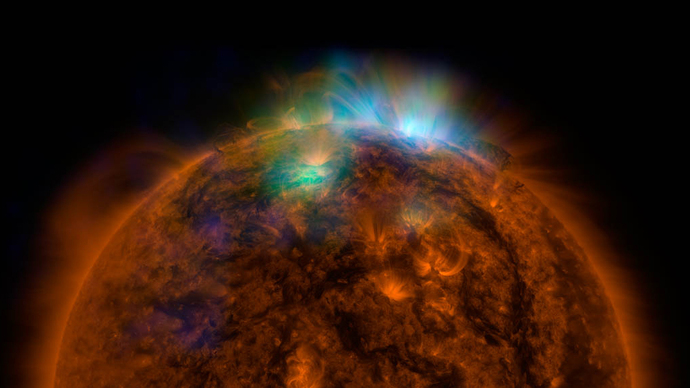The first photo of the Sun from the NuSTAR space observatory

NuSTAR (Nuclear Spectroscopic Telescope Array) - NASA space observatory in the program of small space satellites. The station was launched back in 2012, and since then the main task of the observatory has been to study objects outside the solar system.
Now NuSTAR camera lenses were first aimed at the sun . Scientists were able to get a high-quality photograph of our star in the X-ray spectrum. As a result, experts were able to see the various "layers" of the solar atmosphere, from the lowest to the highest.
')
Interestingly, scientists planned to use NuSTAR to study the Sun long before the advent of the space observatory. Seven years ago, when NuSTAR was in the project stage, and the earliest stages, scientists were already considering the possibility of studying the star with the help of a space observatory. The Observatory itself is the most sensitive telescope currently working in the X-ray spectrum. With its help, scientists managed to look into the most remote areas of the universe.
The idea of studying such a close object as the Sun, with the help of a super-sensitive telescope, at first seemed insane. But after a while, supporters of the idea were able to prove their point of view. And the decision was made - NuSTAR will help professionals to study the sun. At the same time, the radiation of the Sun cannot damage the sensors of NuSTAR, since the most active X-ray radiation of a star is lower in activity than the one for which NuSTAR detectors are designed.
One of the tasks of studying the Sun is to find out how the solar corona heats up to a million degrees Celsius, while the surface of the Sun has a temperature of “only” 6 thousand degrees. This phenomenon can be compared with fire, which is pulled out from the womb of the ice block. One of the probable causes is nanos, miniature versions of giant solar flares, with the release of charged particles and high-energy radiation. So far, no one has been able to register, see, and NuSTAR, perhaps, will be able to fix one or several such flashes.
In addition, NuSTAR may be able to capture hypothetical dark matter particles, which are called axions . If such particles really exist, NuSTAR, with a high degree of probability, will be able to detect them.
Well, now scientists continue to study the image that NuSTAR received the other day.
Source: https://habr.com/ru/post/375195/
All Articles